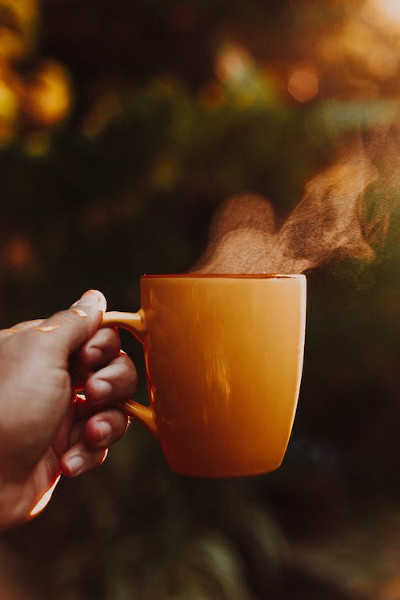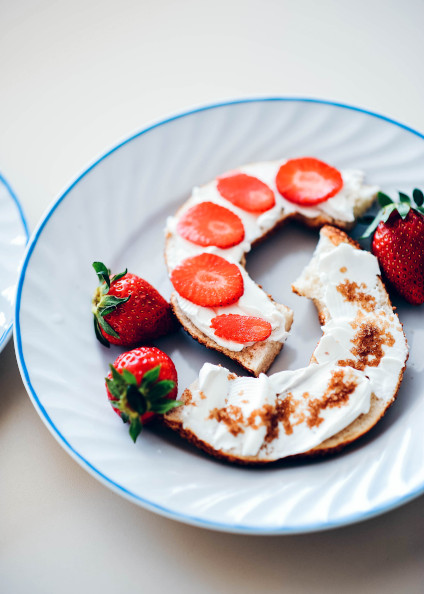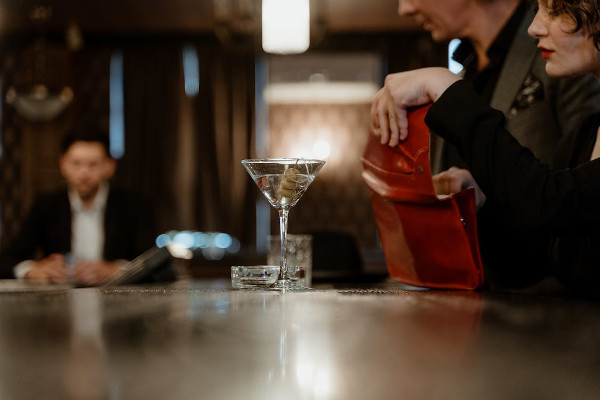The Plague Diner’s Diary

Man shall not live by bread alone, says the biblical proverb, somewhat ambiguously. The same can be said about coffee. We break bread and drink coffee (or tea, or wine, or cocktails, or sparkling water) with others – not alone – to nourish both body and soul. Hence the evolution of a café and restaurant culture all across the world that endures the ups and downs of war and peace. Even in Nazi-occupied Paris in the 1940s, restaurants and cafés thrived, serving citizens caffeine and calories for optimal performance, and sociability for emotional and intellectual connection. But during a pandemic, there is no collaboration with the enemy and shutdowns are necessary for survival.
After 50 years of sociable eating and drinking out in Berkeley, the Bay Area and beyond – and writing about it – my gastronomic universe came to a halt in March of 2020. So I took to my journal and camera to record this new dining reality, or surreality, as the case may be. Where there is a will, there is a way. And where there is an appetite, there is a meal, even in isolation. These selected entries from my journal document my will and my appetite during a Covid year of eating and drinking, mostly alone, mostly at home.
Bon Appétit!

MARCH 16, 2020
Berkeley is starting to shut down: Yesterday, I brought one of my favorite coffee mugs, a silverplate knife and fork, and a cloth napkin to my still-open morning spot – Saul’s Delicatessen. I ordered a cappuccino and a slice of pound cake. I poured the coffee from a Saul’s to-go paper cup straight into my ceramic cup. The barista was not allowed to use one of Saul’s. The cake was served on a sheet of waxed paper directly onto the napkin I placed on my disinfected table. I was able to leave the exact amount of the bill to minimize shared contact with money. This is crazy!
The morning manager, witnessing my picnic table set up, laughed and asked to take a picture. This was evidently an amusing first, though the day before a fellow came in to eat, she said, wearing a gas mask and rubber suit. I decided to take a picture too, documenting perhaps my last café visit for the foreseeable future. All the cafés in Paris are closed now, according to press reports, and no doubt it’s the same all over Europe. Ours are next.
One of my favorite café culture quotes from Thomas Pynchon’s Gravity’s Rainbow:
Dialectics, matrices, archetypes all need to connect once in a while, back to some of that proletarian blood, to body odors and senseless screaming across a table, to cheating and last hopes, or else all is dusty Dracularity, the West’s ancient curse.

APRIL 2
Memory Food – Nana’s lox, bagels and cream cheese: True, food can trigger lost memories, which can be very pleasant and vivid when recovered, even revelatory as we know from brain science and literature (Marcel Proust). The olfactory bulb (smell) and memory centers are closely connected on the right side of the brain. With Passover and its recitation of plagues just days away, food and memory are starting to play with each other against the backdrop of our own plague.
Proust’s forgotten childhood emerged with the taste of a small teacake, a Madeleine. But, in a reversal of Proust’s process, our remembered past can elevate the pleasure of food. Remembering and celebrating our long-departed family members and the foods we shared with them can transform a meal or dish into something deeply satisfying.
My memories of Nana, my paternal grandmother, are vivid. She taught me the proper way to place a single slice of lox on top of a bagel smeared with cream cheese. The trick was to spread the lox out so thinly with the back of a fork that you could see the hole of the bagel and the white of the cheese through it. Lox was a true luxury food in the 1950s and not to be eaten lightly. Nana’s emphasis on frugality was, I now understand, the psychological residue of her experience of multiple life crises – immigration from Poland to San Francisco in the early 20th century, the 1906 earthquake, World War I, the Spanish flu, the Great Depression, and World War II.
Shaped by my grandmother’s lesson, I prefer now the flavor of this pared-down, open-face version of the Jewish classic. The ratio of fish (less) to cream cheese (more) tastes just right to me.
AUGUST 7
Paris, where are you? Hard to believe that exactly one year ago today I was making friends with a barman in Paris and learning his secrets for a great martini. Seems like just yesterday, or one hundred years ago – Covid time is so confusing!
Oh, for a martini in Paris, even if their version has little to do with our English/American creation. Eric Poindron, my consulting mixologist in Paris, knows the difference, having lived in the US. He was my go-to guy at the bar of the chic Hotel Pont Royale, just up the street from my apartment. I had just been on a side trip to Venice where I had Hemingway’s martini at Harry’s Bar, made with the ratio of 15-1, gin to dry vermouth. I make mine the same, only with vodka instead of gin. With two cocktail onions instead of olives, it’s a Gibson.
Martini variations are infinite. Is it time to rename this cocktail in line with modern variations? Here are my recommended, non-PC neologisms:
Gitini: A classic martini made with gin and a bit of dry white vermouth.
Vokini: A classic martini made with vodka and a bit of dry white vermouth.
Vertiny: A French martini made with sweet red vermouth and a bit of gin.
Virginy: A non-alcoholic martini made with cranberry juice, a splash of tonic water and an orange twist.
Bikini: A blend of French and Anglo tastes: half vodka or gin on top, an equal amount of semi-sweet vermouth on the bottom. Serve on the rocks with a lemon or orange twist.

FEBRUARY 25, 2021
If authors were chefs: My dreams are more vivid during the Covid shutdown, perhaps as compensation for the loss of real life. It’s as if the sleeping brain needs to fill up its tank at night with dream images to make up for the reality fuel lost during the day. The isolation has also resulted in more time for cooking and reading. I woke up this morning laughing at a dream that merged the two – literature and cookbooks. Here is the list* that evolved from the dream after breakfast:
SAMUEL BECKETT: Waiting for Gigot
JOSEPH CONRAD: Lard Jim
MICHAEL CRIGHTON: Jurassic Pork
CHARLES DICKENS: The Pickle Papers
FYODOR DOSTOEVSKY: Cream and Punishment
WILLIAM FAULKNER: The Sound and the Curry
WILLIAM GOLDING: Lord of the Fries
ERNEST HEMINGWAY: For Whom the Bell Pepper Tolls
JAMES JOYCE: Finnegan’s Cake
HARPER LEE: To Cook a Mockingbird
JACK LONDON: The Kale of the Wild
THOMAS MANN: The Magic Muffin
HERMAN MELVILLE: Moby Duck
HENRY MILLER: Tropic of Caramel Corn
MARGARET MITCHELL: Gone With The Wine
SYLVIA PLATH: The Bell Pepper Jar
MARCEL PROUST: In Search of Lost Thyme
JEAN-PAUL SARTRE: Beans and Nuttiness
WILLIAM SHAKESPEARE: Henry Ate
JOHN STEINBECK: Of Spice and Men
J.R.R. TOLKEIN: Lord of the Onion Rings
LEO TOLSTOY: War and Pizza
MARK TWAIN: Huckleberry Flan
JOHN UPDIKE: Rabbit Reduction
VOLTAIRE: Candied
KURT VONNEGUT: Breakfast of Champignons
ALICE WALKER: The Collard Purple
OSCAR WILDE: The Pitcher of Dorian’s Gravy
Following the posting of the list on social media, friends responded with some great titles of their own. If you remove the celebrity authors from some of my titles, they sound like pretty good cookbooks. The Kale of the Wild, Of Spice and Men and The Pickle Papers all could be commercial winners.
*This list was subsequently published by the online magazine, Reinventing Home.
Author Bio:
L. John Harris is the author most recently of My Little Plague Journal (Itasca Books). He was the founder of Aris Books, a specialty cookbook publisher, and in 1988 launched his cartoon Foodoodle byline in several Bay Area magazines. In the 1990s, Harris shifted his focus to documentary filmmaking. He wrote and co-produced Divine Food: 100 Years in the Kosher Delicatessen Trade. He lives in Berkeley, California, in a 100-year-old Bernard Maybeck-designed Italian-style residence (Villa Maybeck) that serves as a venue for musical performances, lectures, poetry readings and private events.
This excerpt is published with permission.
Highbrow Magazine
Image Sources:
--Alexandra Koch (Pixabay, Creative Commons)
--Edward Eyer (Pexels, Creative Commons)
--Mart production (Pexels, Creative Commons)
--Daka, (Pexels, Creative Commons)































































































































































































































































































































